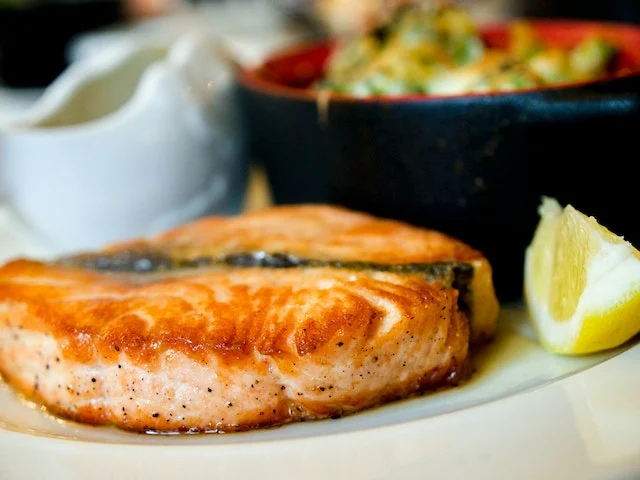Chicken and red meat are both popular options, but which one is better? In this article, we'll compare the nutritional profiles, calorie content, protein and fat levels, and other factors to determine whether chicken or red meat is more suitable for weight loss.
Nutritional Profile
The nutritional profiles of chicken and red meat differ slightly. Chicken is generally leaner, while red meat can have higher fat content depending on the cut. However, both types of meat are excellent sources of high-quality protein.
Calorie Content
When it comes to calorie content, chicken usually has fewer calories per serving compared to red meat. This is mainly due to the lower fat content in chicken. If you're aiming for weight loss, opting for lower-calorie options like chicken can be beneficial.
Protein Content
Protein is essential for weight loss as it helps promote satiety, preserve muscle mass, and support metabolism. Both chicken and red meat are rich in protein, but chicken breast is particularly high in protein while being lower in fat compared to certain cuts of red meat. Incorporating chicken breast into your diet can provide a significant protein boost without excessive calories.
Fat Content
While chicken is generally lower in fat, the specific cut of meat and cooking method play a significant role. Skinless chicken breast is considered one of the leanest options, while certain cuts of red meat can have varying levels of fat. Choosing lean cuts and trimming visible fat can make red meat a viable choice for weight loss as well.
Micronutrients
Both chicken and red meat offer essential micronutrients like iron, zinc, and B vitamins. However, red meat tends to contain higher amounts of iron compared to chicken. If you have specific micronutrient needs or deficiencies, incorporating red meat into your diet may be beneficial.
Cholesterol Levels
Chicken is generally lower in cholesterol compared to red meat. If you have concerns about cholesterol levels, opting for lean chicken cuts can be a wise choice. However, it's important to note that cholesterol intake from dietary sources has a minimal impact on blood cholesterol levels for most individuals.
Satiety and Fullness
Feeling satisfied and full after a meal is crucial for weight loss success. Protein plays a significant role in promoting satiety, and both chicken and red meat are excellent sources. Incorporating adequate protein from either option can help curb hunger and reduce the likelihood of overeating.
Health Considerations
Individual health factors and dietary preferences should also be taken into account. For example, if you follow a specific diet like paleo or keto, red meat may be more aligned with your preferences. Additionally, if you have any specific health conditions, consulting with a healthcare professional or registered dietitian is essential for personalized guidance.
Cooking Methods
The cooking method can influence the overall healthiness of chicken or red meat dishes. Grilling, baking, or broiling chicken and red meat are healthier cooking methods compared to frying or deep-frying. These methods help reduce the added fat and calorie content, making them more suitable for weight loss. Marinating the meat with herbs, spices, and citrus juices can also enhance the flavor without relying on excessive amounts of salt or unhealthy sauces.
Budget-Friendly
When considering weight loss strategies, budget is an important factor for many individuals. Chicken, particularly boneless, skinless chicken breasts, is often more budget-friendly compared to certain cuts of red meat. If you're looking for a cost-effective protein source, chicken can be a more accessible option.
Environmental Impact
The environmental impact of food choices has gained significant attention in recent years. Red meat production generally has a larger environmental footprint compared to chicken production. If sustainable and eco-friendly choices are important to you, opting for chicken can be a more environmentally conscious decision.
Personal Preference
Personal preference plays a crucial role in maintaining a sustainable and enjoyable diet. Some individuals may prefer the taste, texture, and versatility of chicken, while others may have a preference for certain cuts of red meat. Ultimately, choosing the option that aligns with your taste preferences increases the likelihood of sticking to a weight loss plan.
Weight Loss Strategy
In the context of weight loss, it's important to remember that overall calorie intake and creating a calorie deficit are key factors. Both chicken and red meat can be part of a balanced weight loss strategy when consumed in appropriate portion sizes and prepared using healthy cooking methods. The focus should be on incorporating a variety of nutrient-dense foods while considering individual dietary needs and preferences.
Conclusion
When it comes to weight loss, both chicken and red meat can be included in a well-rounded diet. Chicken tends to be lower in calories and fat, making it a popular choice for those aiming to lose weight. However, red meat can also be part of a healthy weight loss plan, especially when opting for lean cuts and practicing portion control. Ultimately, the choice between chicken and red meat should consider individual preferences, nutritional needs, budget, and environmental impact.


Post a Comment